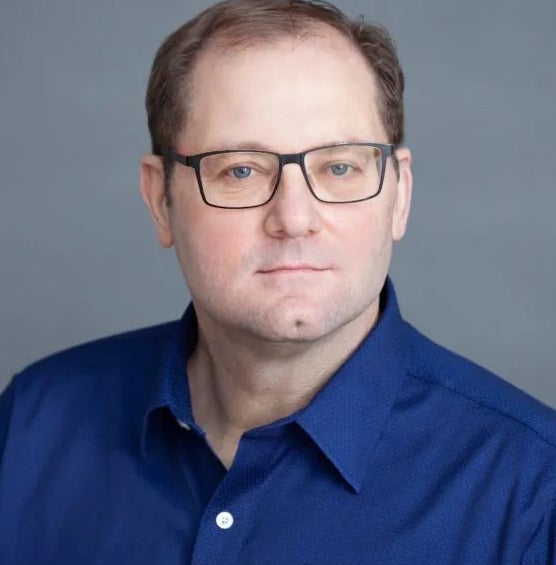Publicis Groupe Chief Commerce Strategy Officer Jason Goldberg often tells prospective clients, “Publicis itself is a retailer.”
Founder Marcel Bleustein-Blanchet opened the Publicis drugstore on Champs-Élysées in Paris in 1958, originally modeled after Woolworths in the US, and it’s been in continuous operation ever since. The Parisian variety store, which features everything from a pharmacy to restaurants to cinemas, is located on the ground floor of Publicis’ corporate headquarters.
But it doesn’t stop there. When TikTok Shop launched in the US, Publicis tested it in beta alongside clients.
“For work, I try everything,” Goldberg said. For instance, he has shopped on Temu, Shein, Shop LC, with a variety of small businesses and Publicis clients like Walmart.
All that sampling means marketing and retargeting tools are wasted on Goldberg. And it also means he’s seen a lot of ads for products he’d never use.
Goldberg is a commerce marketing vet of more than 30 years. On top of that, he co-hosts the popular ecommerce podcast “The Jason & Scot Show” with serial entrepreneur and investor Scot Wingo, CEO of on-demand car wash and detailing company Spiffy.
Publicis Commerce launched more than four years ago as a unit within its agency holding company namesake dedicated to “the whole ecosystem of consumer purchasing,” according to Goldberg.
Since then, Publicis has made a number of techy commerce acquisitions, including retail media company and erstwhile Criteo challenger CitrusAd in 2021, the commerce analytics platform Profitero in 2022 and ecommerce company Corra this June. Close to the top of Goldberg’s shopping list for future acquisitions are generative AI shops that automate personalized marketing messages and AI-based supply chain specialists.
Goldberg chatted with AdExchanger.
AdExchanger: How does Publicis Commerce fit into Publicis? How do you segment a broad area like commerce internally?
JASON GOLDBERG: The Publicis Commerce practice doesn’t have direct clients. Most clients work with an agency. We increasingly have this construct called “The Power of One,” where clients are served by a collection of group agencies.
The Publicis Commerce practice has three big jobs: We provide capabilities and resources directly to clients trying to get better outcomes. The commerce practice also takes on a mentor and knowledge transfer role to help upskill the practitioners in an agency. The third pillar is we produce thought leadership and best practices in the industry.
What trends are you watching in commerce?
Using generative AI to be more predictive of what the consumer wants. To show us using all these products when we’re making purchase decisions is fascinating to me.
I help a lot of people sell apparel online, and one of the banes of apparel sales is returns. There’s a lot of new technology around helping customers get the fitment right and previsualize the clothes. A year from now, we’re probably all going to be looking at clothes in an accurate, realistic way. The market for models to clothes is going away.
We used to discover products in store more than anywhere else; the store was the greatest lead source. Today, we’re discovering a lot more products on TikTok than we are in the store. This social disruption of discovery is a trend that we’re all still in the early stages of.
And then it’s fascinating how successful and impactful these Chinese companies have become marketing direct to consumer in the US.
Thirty years ago, if you were a factory in China, your US strategy was to sell to Walmart. Ten years ago, it was to anonymously sell on Amazon. And today, it’s: Build a brand around a Super Bowl ad and become a trusted, beloved brand for American consumers directly.
I find a lot of commerce practitioners in the US underappreciate how big of a deal and disruptive that evolution really is.
What got you into commerce?
I’m a fourth-generation retailer. My father probably followed a very similar playbook to his father and even his grandfather. But for me, that playbook is totally broken and won’t work. We’re having to reinvent how people shop and what amenities they want every few months.
My great grandfather immigrated to the United States and originally opened a fruit stand – a cart that he would push around Seattle. That turned into a grocery store, which turned into a pawn shop, and that turned into a jewelry store. Ultimately, it became the jewelry department of a department store.
More recently, some of my uncles opened what were, at the time, very unpopular businesses called video rental stores. They were seedy places where you wouldn’t take your family. But my uncle sold those businesses to an entrepreneur in Florida, and they included me in the transition.
Those early video stores became Blockbuster Video, so I was the first director of marketing at Blockbuster. A few years later, the internet became a thing, and I helped Blockbuster launch a website and ecommerce. Later, Target and Best Buy asked me to help with similar projects for them.
And from all that, a career was born.
How has your podcast affected your career?
It’s helpful to have these conversations with really smart people every week. We’ll have Dan McCarthy, a math professor at Emory and one of the fathers of calculating lifetime customer value, on the podcast. And then, a week later, a client will ask about transitioning their metrics to customer lifetime value.
We never thought it would be popular, so we didn’t name it strategically. It’s literally called “The Jason & Scot Show,” which is an awful name. It’s accidentally become a popular thing. We’ve recorded more than 310 shows at this point. We’ve been almost weekly for years. Scot and I both have plenty to do with our day jobs, so neither of us was looking to turn this into another business.
This interview has been edited and condensed.
For more articles featuring Jason Goldberg, click here.














